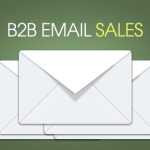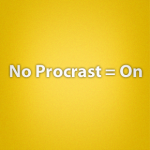Welcome to The Startup Foundry.
Why Carbonmade decided to bootstrap and go freemium
Paul Hontz
TSFPublished: May 24, 2011 3:27 pm

When I was studying design a few years ago, I discovered many of my peers were struggling to get a portfolio online. Many of them didn’t have the required technical knowledge to properly showcase their work. Some of them hired friends in the Computer Science division but their portfolios would grow stale because they didn’t know how to update them.
Carbonmade is attempting to solve that problem by taking care of the technical details while letting artists focus on their work. I had the chance to catch up with a co-founder of Carbonmade, Spencer Fry, to talk about the early days. In this interview we cover how Carbonmade identified a problem, how they determined pricing, and why the “freemium” model is working for them.
Were you bootstrapped or funded?
We bootstrapped Carbonmade because it’s all we know. I’d started a company previously called TypeFrag. Bootstrapped that as well. For me, it just makes sense to collect revenue from the start of your business and if you can’t collect enough of it then you shouldn’t be in business. It’s just a natural progression. Can’t sell enough of what you’re trying to sell? Then you’ve got to shutdown and try something else.
There are companies that can’t be built this way such as Facebook, Tumblr or Twitter where you need a large engaged group of users before you can make any money. To bootstrap you typically need a single user to be able to benefit from the service without having to connect with anyone else. That’s Carbonmade. A user can sign up and create their own online portfolio without needing other people in the system to benefit from it.
We get plenty of offers from investors to talk, but we’re doing well and not having a $5 million check has never held us back from doing what we want. If money is ever the thing holding us back then we might re-consider taking outside investment.
What problem are you solving?
Carbonmade solves a really basic problem. There are millions of creative people in the world, but many of them either don’t have the skills required to design their own online portfolio or the time. Using Carbonmade means they spend less time fussing around with their portfolio and more time focused on developing their artwork.
What’s the biggest challenge you’ve overcome while building Carbonmade?
The biggest challenge for us and for all companies for the most part is hiring. We’re very selective in who we hire. We’re looking for specific individuals that are self-starters, independent workers that don’t need constant handholding, and have built or designed web applications before.
We hired our first people in August 2010. Up until then the three of us worked on Carbonmade for nearly four years. We’re now eight and excited to continue to build out the nucleus of our team.
How did you identify that there was a market for an online portfolio?
We stumbled upon the online portfolio market. Dave and Jason created the first version of Carbonmade back in December 2005 as a tool for Dave to update his own portfolio. He was tired of having to manually update his portfolio every time he created something new. Together they built it ‒ without a sign up page at first ‒ and Dave’s friends bugged him to open it up for them.

I came on about a year later, but we still weren’t working on it full-time. We were consulting and working on other apps, but Carbonmade kept slowly gaining traction. Starting around early 2010 we were able to stop taking on new client jobs and focus our time and energy on developing and supporting Carbonmade. That’s when Carbonmade really started to blow up.
How did you determine pricing?
We experimented with having two pricing points early on: $9 and $15. We found that nearly everyone was choosing the $9 plan and the $15 plan was being neglected. There weren’t enough features to warrant having two paid plans, so we settled on $12, because we thought that $9 was too low.
The question you want to ask yourself is: “What would I pay for this?” $12 felt right to us at the time. The product has improved significantly since then, which makes us happy that the value of our product has risen, but the price has remained the same.
Have you had success with your freemium model?
People generally ask me about our freemium business model. I believe that giving away a taste for free is a great marketing strategy. With Carbonmade, the free model works for many users in the beginning but as their career develops and they start getting more work, they need to upgrade to take advantage of our paid plan features. We’ve had dozens of people upgrade after 1,000 days which is a significant figure. Forcing them to pay on day one may have kept them from signing up in the first place.
What’s difficult about having a freemium business model is determining where to set the restrictions. The free plan needs to be good enough that it doesn’t feel crippled, but not so good they see no reason to upgrade to the paid plan.
If you need to showcase your work, be sure to checkout Carbonmade.
For more startup news, follow us on Twitter @startupfoundry or on Facebook.
-
👉 Filed Under.
Categorised in: Bootstrapped
Get Connected:
If you like startups, join our weekly mailing list. Good startup content, no fluff.
👇

Hi, I'm Paul Hontz.
I'm a YC alumn and I love startups. I created TSF to highlight companies I find interesting. You can learn more about me here.
Recent Posts:

The Story of Cruise (YC W14): How 4 people built a self driving car in 7 months.
Jul 8, 2014 2:35 pm

I Want To Write About Your Startup – Relaunching TSF
Jan 17, 2014 5:14 pm

How To Do B2B Email Sales
Nov 23, 2011 2:12 pm

Nasty Bug in iOS 5.0.1 OTA Update screws up Address Book on the iPhone 4S
Nov 10, 2011 11:56 pm

It’s Easier to Answer to Your Code Than Your Customers
Oct 28, 2011 2:25 pm


